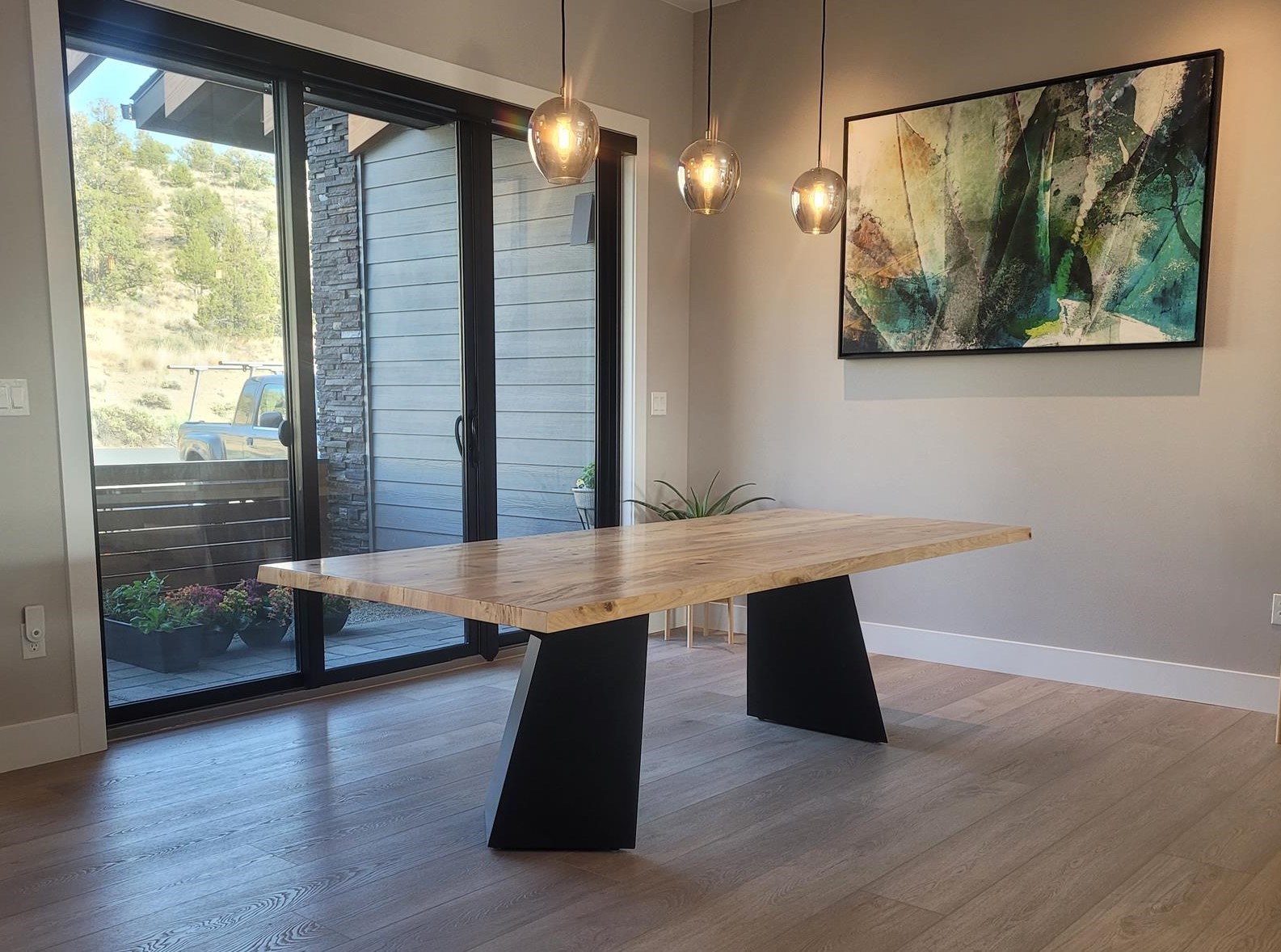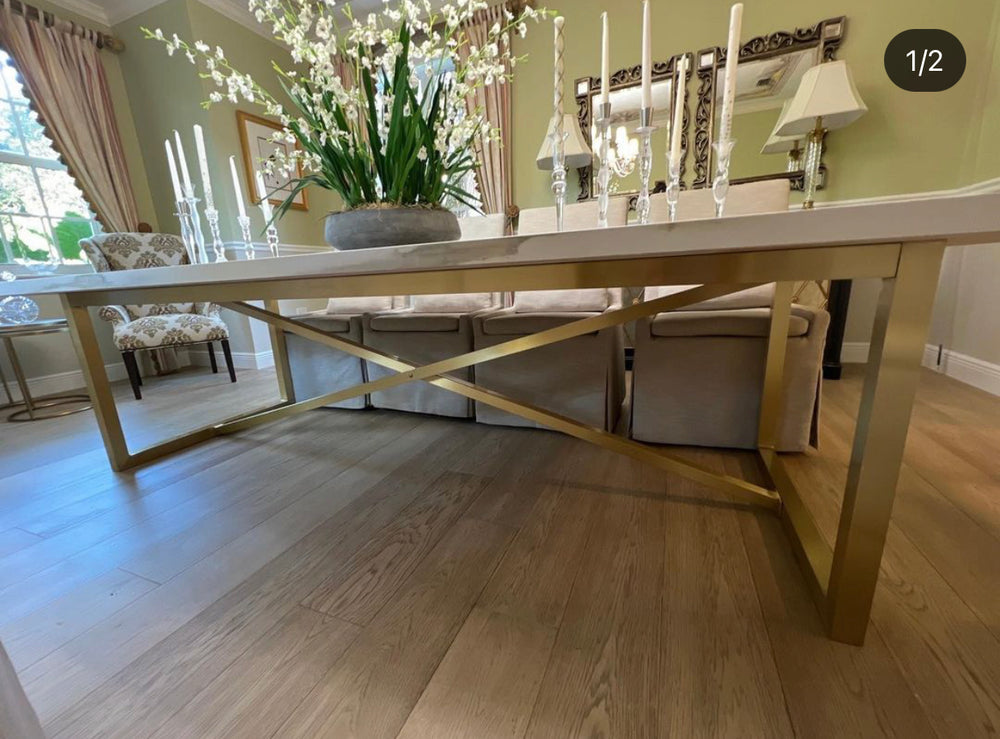Leading Patterns in Dining Room Table Legs to Raise Your Eating Area
Leading Patterns in Dining Room Table Legs to Raise Your Eating Area
Blog Article
Selecting the Perfect Eating Table: What Styles Job Best for Your Home?
Selecting the suitable eating table for your home can be a nuanced process that stabilizes aesthetic appeals and capability. To navigate these options successfully and locate a table that really matches your home, take into consideration the following facets in information.
Assessing Your Area
Examining the measurements and format of your dining area is a crucial initial step in choosing the excellent table. Begin by measuring the length and width of the room, accounting for entrances, home windows, and various other building attributes that can affect table positioning. This guarantees that your table not only fits however likewise enables comfy activity around it.
Take into consideration the variety of people you commonly entertain. A table should accommodate your home's daily needs while providing sufficient versatility for occasional guests. As a guideline of thumb, assign at the very least 24 inches of table width per person to make certain a comfy eating experience.
It's likewise vital to maintain appropriate clearance around the table. Preferably, there must be at the very least 36 inches in between the table side and walls or various other furnishings, allowing easy gain access to and movement. For rooms where chairs with arms or extra storage units like buffets are entailed, raising this clearance to 48 inches is suggested.
Illumination and atmosphere play substantial functions. Make certain that your eating table lines up with existing lighting components or plan for adequate illumination services. This comprehensive spatial assessment warranties that your table not only fits literally but additionally balances with your area's general functionality and aesthetic.
Popular Table Styles

Standard dining tables commonly include elaborate details, curved legs, and rich timber coatings, stimulating a feeling of classic style. They are excellent for homes with timeless decoration or those seeking to add a touch of elegance to their dining area.
Modern dining tables focus on simpleness and clean lines, frequently incorporating products like glass and steel. These tables are suitable for contemporary spaces, offering a smooth and uncluttered look that enhances minimal style philosophies.
Rustic table, on the various other hand, highlight natural products and a handmade appearance - dining room table legs. They frequently feature recovered wood and a troubled coating, producing a cozy and welcoming atmosphere. These tables function well in farmhouse-style homes or those seeking a cozy, natural feel
Industrial dining tables incorporate raw materials such as steel and wood, frequently showcasing a practical aesthetic. This design is appropriate for lofts or metropolitan spaces, including a touch of tough beauty and toughness to the dining experience.
Each style supplies unique benefits, making it important to choose one that lines up with your home's overall style and your individual choices.
Material Selections
When selecting a table, the choice of product plays an essential duty in identifying both the table's aesthetics and functionality. Wood, steel, glass, and composite materials each offer one-of-a-kind benefits and difficulties, making it important to straighten the material with your home's style and lifestyle requirements.
Timber is a timeless and flexible alternative, readily available in varieties such as oak, walnut, and mahogany. Understood for its longevity and heat, wood complements both typical and modern interiors. Nonetheless, it requires routine maintenance to avoid scratches and bending.
Metal tables, often crafted from stainless-steel, aluminum, or functioned iron, are commended for their modern allure and effectiveness. They are specifically suited for commercial or minimalist settings yet can be susceptible to dents and may really feel cold to the touch.
Glass table bring an air of elegance and openness, suitable for smaller sized rooms as they produce an impression of even more room. While simple to tidy, glass can be susceptible to smudges and requires careful handling to stay clear of chips and fractures.
Composite products, such as MDF and plywood, deal affordable and customizable services, though they might lack the longevity of all-natural products. Choosing the right material guarantees your dining table is both a functional asset and an aesthetic joy.
Forming and Dimension Factors To Consider
After identifying the ideal material for your table, the next consideration is selecting the right sizes and shape to match your area. The form of the table dramatically influences the area's visual and performance. Rectangle-shaped tables, one of the most common shape, are optimal for bigger spaces and can fit a greater number of visitors. They additionally permit for a more formal dining experience. On the other hand, rounded tables foster a feeling of affection and are outstanding for smaller sized eating areas, encouraging discussion by eliminating corners and making everyone feel just as consisted of.
Dimension is just as vital and should be dictated by both the area's dimensions and the variety of people you plan to seat regularly. As a policy of thumb, allot a minimum of 24 inches of table size each to ensure comfy eating. Additionally, think about the table's clearance room: there Recommended Site ought to go to the very least 36 inches between the table edge and the walls or various other furnishings. This ensures that diners can walk around conveniently without feeling cramped. Prolonging tables use versatility if you often organize bigger gatherings, providing extra seating when required without inhabiting additional space daily. Selecting the best sizes and shape makes certain both practicality and aesthetic harmony in your eating area.
Matching Your Decoration
Picking a dining table that harmonizes with your existing style is essential in producing a cohesive and welcoming room. Begin by examining your current indoor layout style, whether it be contemporary, typical, rustic, or eclectic. The dining table need to enhance the general aesthetic, not compete with it. A streamlined, minimalist table with tidy lines is optimal for a modern home, while a vintage, elaborate table suits a much more typical setup.
Color and material are equally significant. If your decoration features warm tones and natural materials, take into consideration a wood table to improve the organic feeling. Conversely, a glass or metal table may be a lot more proper in a room controlled by awesome shades and industrial components. Take note of the coating, as it needs to mirror various other furniture and fixtures to preserve consistency.
A rough-hewn, reclaimed wood table can add Get More Info character to get more a rustic room, while a polished marble surface can elevate a glamorous eating area. A well-matched eating table not only improves visual appeal but additionally enriches the total eating experience.

Conclusion
Choosing the optimal table necessitates cautious factor to consider of room, style, materials, shape, and dimension (dining room table legs). Standard tables complement classic insides with abundant wood coatings, while modern-day tables suit contemporary settings with glass and metal. Rustic styles introduce warmth by means of all-natural materials, and industrial styles boost city atmospheres with raw components. Balancing the table with existing decoration guarantees both capability and aesthetic allure, contributing to a cohesive and cosmetically pleasing eating area.
Report this page